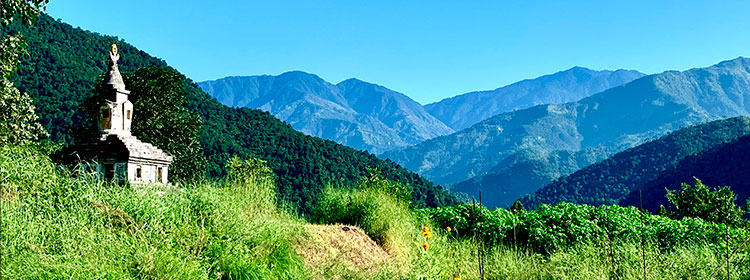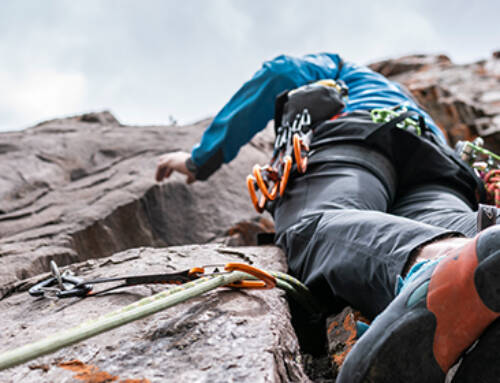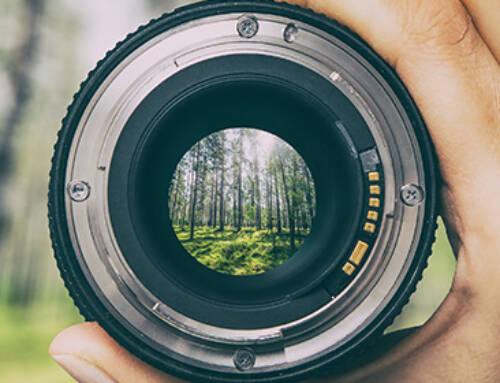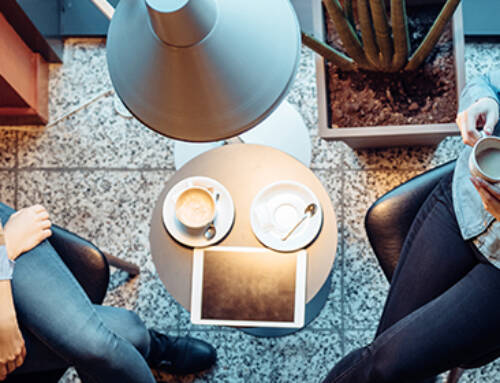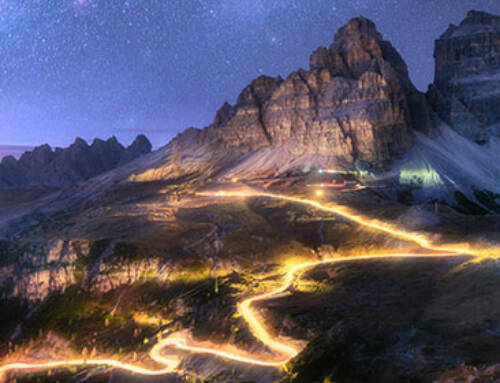Coming back from my October 2022 trip to Nepal, I wanted to document the gear I brought with me and my experiences, both for myself and for others as well. Overall, I came back from five days on the trail very happy with what I chose and feeling prepared to go back again next year. My criteria for picking gear on this trip were simple. Items had to be budget-friendly and lightweight, with some room for a few luxury items where it made sense.
For reference, let me set the stage here quickly. Instead of leaving Kathmandu and traveling toward Everest Base Camp or the Annapurna Trail, we went the opposite route of most travelers. Our goal was to see things no one sees, so we headed south and flew into Simara. From there, we traveled for about three hours by SUV before setting off on our trek. Because we went south, the terrain was different, and the temps were warmer. It was between 80-85F during the day and between 45-50F each night. Even if you head north, the items I’m sharing here will be valuable to you. I’m planning to go back and head north myself, and I will be bringing all these same items with me.
Here’s some of what I brought on the trail, along with each piece’s upsides and downsides…
FEET
As you’re hiking, protecting your feet is essential. With that in mind, here’s my take on boots and socks, the two items I believe are the most important gear you will bring to Nepal…
Lowa Renegade Boots (Click to View)
There are so many boot options out there. As I was researching, the Renegades kept coming up in conversations, and I ended up being very happy that I picked them. These boots broke in extremely fast. They quickly became comfortable, and by the time we hit the trail in Nepal, the Lowa Renegades had become one of the most comfortable things on my feet. They are still my go-to boot here back at home. Paired with a pair of Smartwool Hiking socks, the Lowa boots performed awesome each day, and I experienced no blisters or discomfort.
The Upside: Hiking on dirt roads as well as rocky and slippery goat trails, the Renegades provided amazing grip. The
Downside: The toe box was slightly tighter than I would have liked, and I got similar feedback from one of my trekking partners. It was not an issue, but if there is one downside, this is it.
…
Smartwool Men Performance Hike Light Cushion Crew (Click to View)
I brought three pairs of socks for my five-day hike, one pair on my feet and two in my pack. I could have gone with just two pairs, but if there was one area where I wanted to be extra-prepared, it was with my feet. Alongside with my Renegades, socks were the other thing that would protect my feet for my hiking, and I didn’t want to sacrifice that. Over the course of the five days, I used two pairs, with one as a spare in case we had to cross water or get wet.
The Upside: The Smartwools kept my feet comfortable and never picked up any kind of a stink. They fit well and held up well over my training and the trek itself.
The Downside: Just like most good backpacking gear, these socks weren’t cheap. That said, I was glad I spent a little extra in this area.
…
SLEEP
On the list of things that are important, getting a good night’s sleep and rest is a close second to protecting your feet. Every day on the trail, I was ready to hunker down and get some rest, and this gear made that possible…
Therm-a-Rest Prolite Apex Sleeping Pad Regular Wide (Click to View)
As I was shopping for a sleeping pad, I found this one in REI’s used gear. It had been used once and returned; upon inspection, it looked new. The best part, since it was used, the price was right at roughly 2/3 of normal retail. This pad was slightly heavier than other alternatives I had looked at, but the extra few inches on the regular wide version made for comfortable sleeping at night with room to move around.
The Upside: Super comfortable pad, sturdy construction, and packed down quickly and easily. Also, great R-value on the trail.
The Downside: The pad self-inflates, but it takes a while. I ended up blowing it up most nights for sleep.
…
Therm-a-Rest Corus 20F/-6C Backpacking Quilt (Click to View)
There’s a lot of chatter online about quilts vs. sleeping bags. I had always used a bag, and made a move to a quilt for this trip. Since we went south in Nepal, our sleeping temps were warmer than most Nepal treks. On average, it got down to between 45-50F each night. That said, the Corus was a little warm for the environment. Here’s my take on quilts as a whole… I loved using this instead of a bag! If temps were dipping below zero, like I experienced in January in northern Minnesota, give me the bag. Above 20 or so, I will go with a quilt from here on out. Sleeping under a quilt provided a freedom that a normal, restrictive back never does, and it seemed to control the temperature well with no drafts.
The Upside: For the investment, the Corus was the lightest weight quilt I could find, and I’ve always trusted Therm-a-rest gear. As well, it packed down super small making it a great trail companion.
The Downside: For this trip, based on the temps, this quilt was a little warm. That said, it was a quilt, so it was easy to simply kick my feet out.
…
Nemo Fillo Pillow (Click to View)
I’ll be honest… Bringing a pillow felt like a bit of a luxury. In the past, on a trip like this, I would have put clothes in a stuff sack and created a DIY pillow. For this trip, though, I decided I wanted to do everything I could to ensure good sleep. The Fillo was a small, lightweight option, and all of the reviews I read on it were solid. On the trek, it didn’t take up any room and what it added to my pack weight was well worth it.
The Upside: Adding this to my gear list allowed me to sleep like a baby, and it inflated in a matter of seconds every night.
The Downside: There really wasn’t any downside on this one. It performed as promised.
…
WATER
CamelBak Crux 2-Liter Water Reservoir (Click to View)
Here’s the deal—some people like reservoirs, and others like bottles. I supplemented my 2-liter CamelBak Crux with my 24 oz GRAYL GeoPress and was very happy with the combination. Throughout the trip, we filtered all of our drinking water, and there were a couple of spots where water was going to be hard to come by. However, the ability to fill the 2-liter and carry that simplified things, and I loved being able to access drinks while hiking.
The Upside: The CamelBak Crux was durable and never leaked on the trail. In retrospect, it would have been smart to pack some repair parts, but I never needed them.
The Downside: Be careful with the bite valve on the trail. Sometimes I would set down my backpack and the hose and valve would end up in the dirt. I was always careful to sanitize it when this happened to keep from getting sick.
…
GRAYL GeoPress 24 oz Water Purifier Bottle Filter (Click to View)
The GRAYL GeoPress is a beast and quickly became my best friend. Filtering all of the water we drank required us to run everything through our GRAYLs. The GeoPress is fast, easy to use, and filters large amounts of water in the fly. Whether we were grabbing water from one of the faucets, a black hose in the mountains, or a stream, the GRAYL turned all the water we encountered into safe sources of drinking water.
The Upside: The GRAYL GeoPress is tough as nails. It is well-built, durable, and reliable, which matters when it comes to staying hydrated.
The Downside: It takes a few rounds to get used to how the press function works and the best way to move water through the filter. Once you figure it out, though, you’ll have no issues.
…
FOOD
We had a team who cooked breakfast and dinner for us every day. That said, breakfast and dinner were always the same. We ate Nepali Dal Bhat (lentils and rice) for each meal. They supplemented our breakfasts with a hardboiled egg, and dinners included local chicken or some other protein. That said, I packed some extra food, and I was glad I did.
Peak Refuel Sweet Pork and Rice (Click to View)
Peak Refuel Beef Pasta Marinara (Click to View)
Peak Refuel Beef Stroganoff (Click to View)
This trip was my first time trying Peak’s freeze-dried backpacking meals. They market these as containing real meat, being high in protein, and being quick to prepare. Peak is right on all accounts. Of the three meals I brought, the Sweet Pork and Rice was my favorite. I’ve considered getting it to eat back here at home for a regular meal. The marinara was also very good, and I would get that again as well. When I made the stroganoff, my water was lukewarm instead of really hot. Then, I was so hungry that I don’t believe I let it rest in the bag as long as I should have. The result was my least favorite of the three, but I am convinced that it would have been better if I had cooked it correctly.
The Upside: After eating Dal Bhat for breakfast and dinner three days in a row, I needed a change. These Peak meals were another luxury I was very happy to have on the trail.
The Downside: There is no downside. I came back excited to try some of Peak’s other flavors. I’m not sure I’d get the stroganoff again, but I think that comes down to preparation and personal preference.
…
Here are three other luxuries that I loved on the trail…
JUSTIN’S Classic Peanut Butter Spread Squeeze Packs (Click to View)
LifeSavers 5 Flavors Hard Candy (Click to View)
Jack Link’s Beef Jerky, Teriyaki, ½ Pounder Bag (Click to View)
…
On the trail, I also brought with some lightweight eating gear. Specifically, I packed a spoon/fork combination, a bowl, and a mug. To ease cleanup, I would wrap the bowl in a crockpot liner, and then when finished eating, I disposed of that. Another trick when eating the Peak dehydrated meals I talk about next was to simply eat right out of those bags.
humangear GoBites Uno (Click to View)
Sea to Summit Delta Bowl (Click to View)
Sea to Summit Delta InsulMug (Click to View)
…
HYDRATION AND ENERGY
Day one on the trail was warm, about 85F, and I didn’t drink enough water. I quickly realized two things… First, getting dehydrated was going to make this trek miserable. Second, between the Liquid I.V., the Nuun Sport, and the GU energy, I was able to get myself back on track very quickly. All three also helped me stay on track throughout the course of the trip, keeping my hydration and energy levels where I needed them to perform at my best.
Liquid I.V. Hydration Powder Packets (Click to View)
Nuun Sport: Electrolyte Drink Tablets (Click to View)
GU Energy Original Sports Nutrition Energy Gel (Click to View)
…
BACKPACK
Osprey Exos 58 Men’s Ultralight Backpacking Backpack (Click to View)
From carrying the Osprey Exos through Nepal’s airports to hiking with it on Nepal’s trails, this pack performed exactly how you’d want a great pack to show up. For me, the measure of a good pack is how it feels when the weight is properly distributed. I say that because the Exos felt great every day except when I packed it too quickly and didn’t distribute my weight correctly. When I did my part, the Exos did its part, and we quickly became great traveling companions. The straps felt great, it adjusted easily, and the Exos handled everything I threw at it with rugged determination.
The Upside: Comfort, comfort, comfort. The Exos pack fits well, hugs your back in all of the right ways, and feels light even when packed up.
The Downside: There are two pockets on the right and left side designed to hold a water bottle. Those were hard to access. As well, on the hip belt, there are two zippered compartments. Again, these were harder to access than I would have liked. I think breaking in this pack a bit more will solve both issues.
…
TENT
Big Agnes Copper Spur HV UL – UltralightBackpacking Tent (Click to View)
Shelter, along with protecting your feet and sleeping well, is essential. I borrowed the Big Agnes Copper Spur tent from a buddy who had been to Nepal several times before. As with almost every other tent on the planet, they pitch this as a two-person tent. The reality is that with your gear and wanting some room to wake up and wind down each day, it’s a one-person tent. That said, the Copper Spur was a rockstar on the trail. It was easy to put up with just one person, and it withstood one windy night on top of a ridge that tested it. As an ultralight tent, it was great for conserving weight and packed down well. The zippers and tie-downs were well constructed, and the Copper Spur did a great job of shedding dew in the mornings.
The Upside: A great on-the-go companion that never created any stress or drama on the trail.
The Downside: My buddy’s son was the last one to use this tent, and for some reason, the shock cord that holds the poles together was stretched out, making setup a pain. Fortunately, I tested putting it up here at home, and I figured out pretty quickly how easy it was to restretch and adjust the cords.
…
TECHNOLOGY
Anker Portable Charger 20000mAh Battery Pack (Click to View)
There are tons of options out there when it comes to portable battery packs and chargers. One thing to consider is whether to bring a 10000mAh pack or a 20000mAh version. I chose the 20000mAh option because I knew I wanted to take photos and videos throughout the trip, on the trek, and in Kathmandu. A friend of mine had used an Anker bank in the past and loved it, so I also decided to bring this.
The Upside: This portable charger held its charge very well for the duration of my trip and allowed me to keep my iPhone and camera charged on the trail.
The Downside: This wasn’t the lightest of all the portable battery packs on the market. I would say, though, that its ability to hold a charge for the trek’s duration made it worth the weight.
…
CLOTHING
I’ll keep this section simple. You want something that will wick sweat, dry quickly, and work within your operating temperatures. Going south in Nepal, I used lightweight gear for most of the trip, although I did pull out my puffer jacket and hat in the evenings. Had we gone north out of Kathmandu, toward the Himalayas, warmer gear would have been necessary.
…
EXTRAS
Black Diamond Equipment Trail Back Trek Poles (Click to View)
When I began training for this trip, everyone said I should get poles. So finally, on one of our training days, I took a buddy’s offer to try his, and I was hooked. I don’t know how to rate the difference between good and great poles. What I do know is this… The Black Diamond poles were lightweight, packed down small, and kept me on my feet as we navigated the goat trails and hillsides. They also did wonders to save my knees on the trip. At the end of each day, my legs were tired, but I was never exhausted.
The Upside: I felt great and stayed on my feet.
The Downside: As I said, all I know is that these poles did what they said they would.
…
Sea to Summit Lightweight Dry Sack 3-Piece Dry Bag Set (Click to View)
When loading a pack for the trail, you put a lot of gear inside. This 3-piece dry bag set from Sea to Summit allowed me to organize my gear and access it quickly on the trail. I used one for technology, another for toiletries and medications, and the third for my snacks and lunch. Had it rained, which it didn’t, I would have been even happier with these bags.
The Upside: Sea to Summit makes great dry sacks, and they streamlined my gear organization for the trail.
The Downside: There are other options that are less expensive online. My only fear would be whether or not those cheaper dry bags actually keep things dry.
…
THE TAKEAWAY
As you can see, I did my best not to break the budget, to keep my pack light, and to include some luxuries in the mix. Regarding gear, each of us has to come up with our own secret sauce – what works for us and what doesn’t. We also have brands we’re loyal to and that we would never choose, with positive and negative experiences driving those decisions.
Some of the guys I trekked alongside took ultralight backpacking to the next level and were more minimalist than I was. Others were less concerned about weight and more concerned about comfort. I kept weight to a minimum while at the same time carrying a few extras to keep the trip enjoyable.
Hopefully, something here is valuable to you, and happy trekking!
Ready for more?
Follow me here for more insights like this one. You’ll also get massive value out of the Grit Meets Growth podcast that I share with Chris Cathers. Find it here or on your favorite podcast platform!

